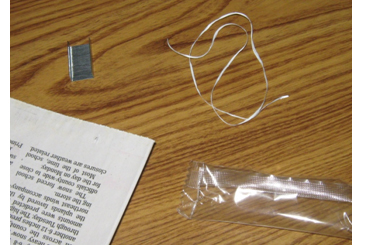|
|
| Suspicion cues: What the hell is in that cell? |
| By Joe Bouchard |
| Published: 08/15/2016 |
 When we ask “What the hell is in that cell?”, we do so as concerned corrections staff who strive to make our facilities safe for staff, offenders, and the public. It is our curiosity that fuels this imperative. Most of us acquire the habits of detectives in this vocation.
When we ask “What the hell is in that cell?”, we do so as concerned corrections staff who strive to make our facilities safe for staff, offenders, and the public. It is our curiosity that fuels this imperative. Most of us acquire the habits of detectives in this vocation.
It is a true statement that not all prisoners will trade or carry contraband. It is also true that many will. This is a reality of the circumstances of incarceration. We cannot overlook anyone housed inside a correctional facility from suspicion. None of this is personal. Rather, we operate under the principle of preponderance of evidence. Are we forced, then, to search everyone and everywhere? Or do we simply succumb to the overwhelming and inevitable odds against finding destabilizing contraband? All is not lost. While we will not find everything for which we search, we have a few tools at our disposal. These are suspicion cues. Here are just a few points of departure for the search:
We are correct to be suspicious. Contraband is ubiquitous and it is dangerous, no matter the form. When we do not find contraband from these suspicion cues, it does not mean that we were necessary wrong. We may have just overlooked it during the search. Whether you trust your gut or look at strict preponderance of suspicion, the action which follows is important. There is no doubt that offenders have ample time to plot concealment tactics. However, staff have advantages of training, communication, and a fresh start every day. Still, since we cannot be everywhere all of the time, we need to utilize suspicion cues whenever we can. The safety of so many depends on this. Joe Bouchard is a Librarian employed with the Michigan Department of Corrections and a collaborator with The International Association of Correctional Training Personnel (IACTP). He is also the author of “IACTP’s Corrections Icebreakers: The Bouchard 101, 2014”. The installments in this series include his opinions. The agency for which he works is not in any way responsible for the content or accuracy of this material, and the views are those of the contributor and not necessarily those of the agency. While some material is influenced by other works, all of the icebreakers have been developed by Joe Bouchard. Visit the Joe Bouchard page Other articles by Bouchard: |
MARKETPLACE search vendors | advanced search

IN CASE YOU MISSED IT
|


Comments:
No comments have been posted for this article.
Login to let us know what you think